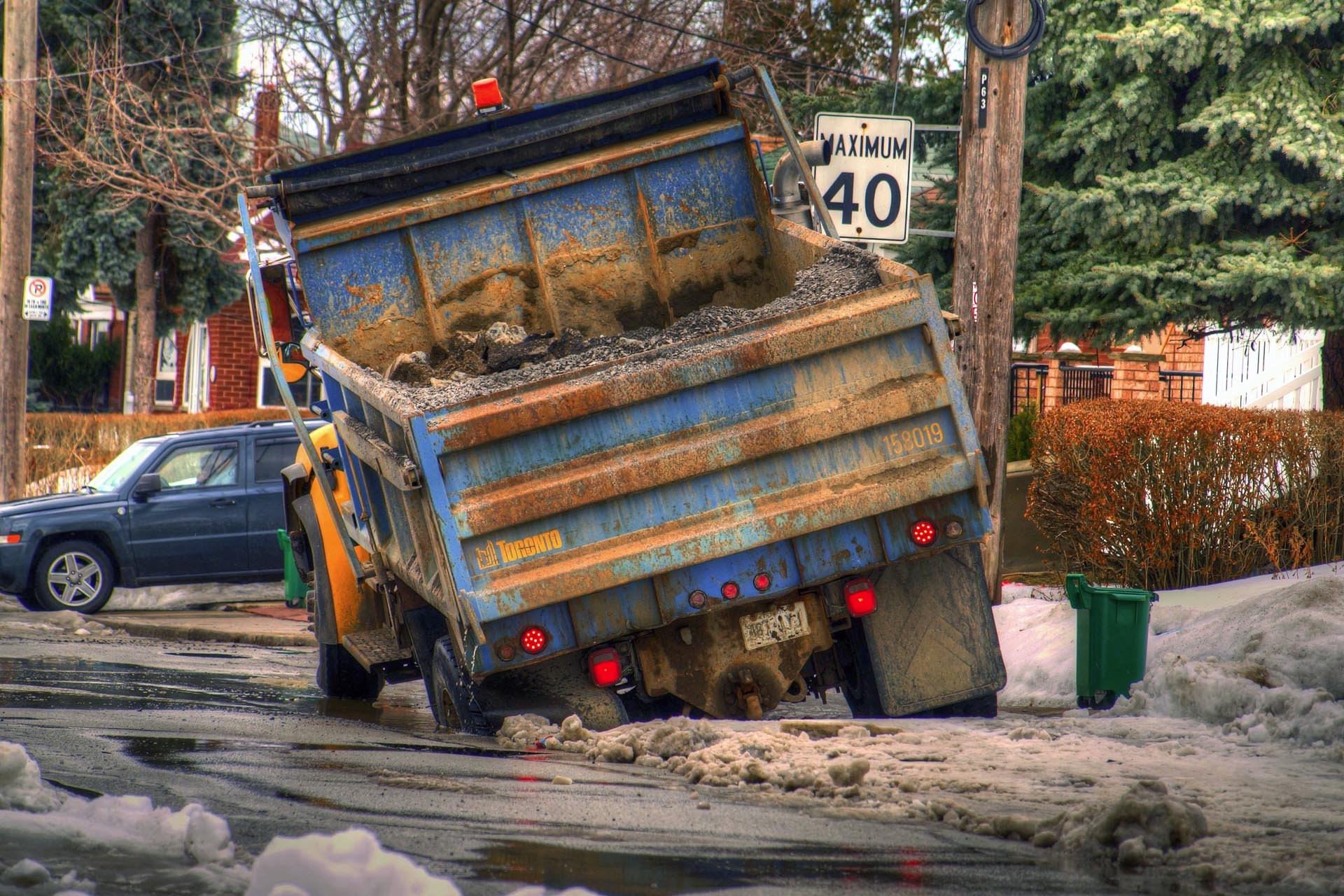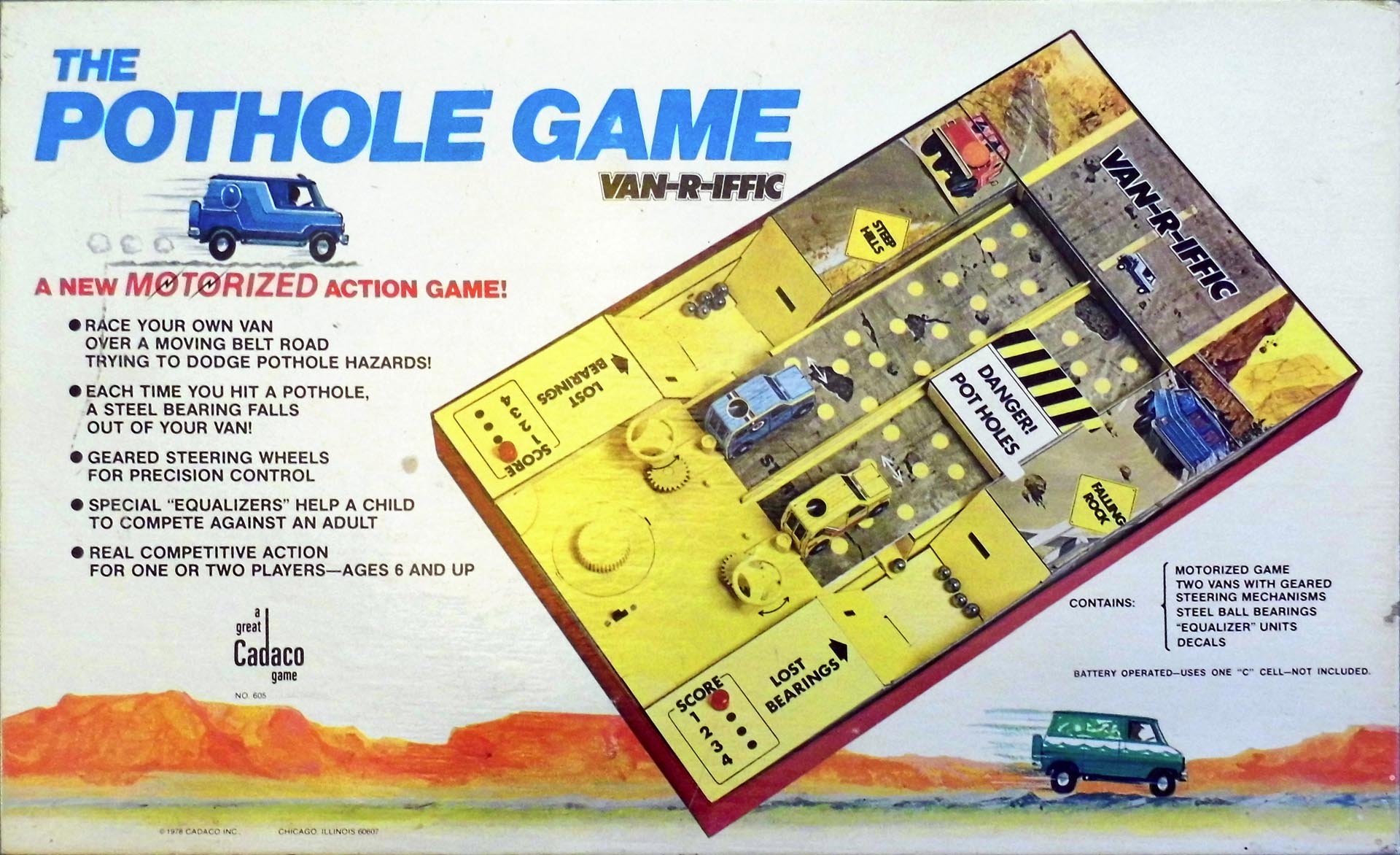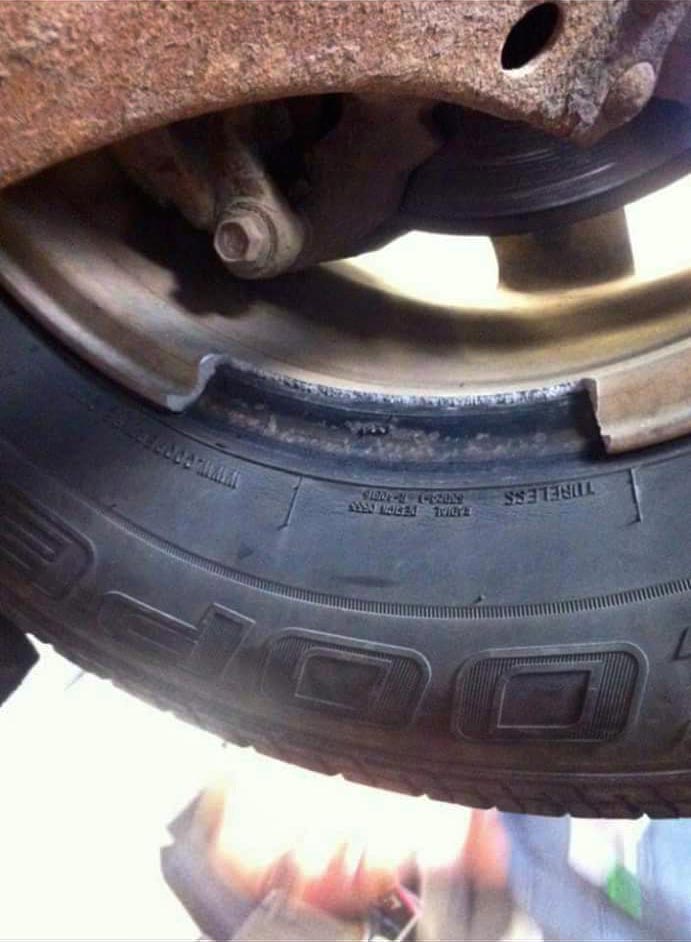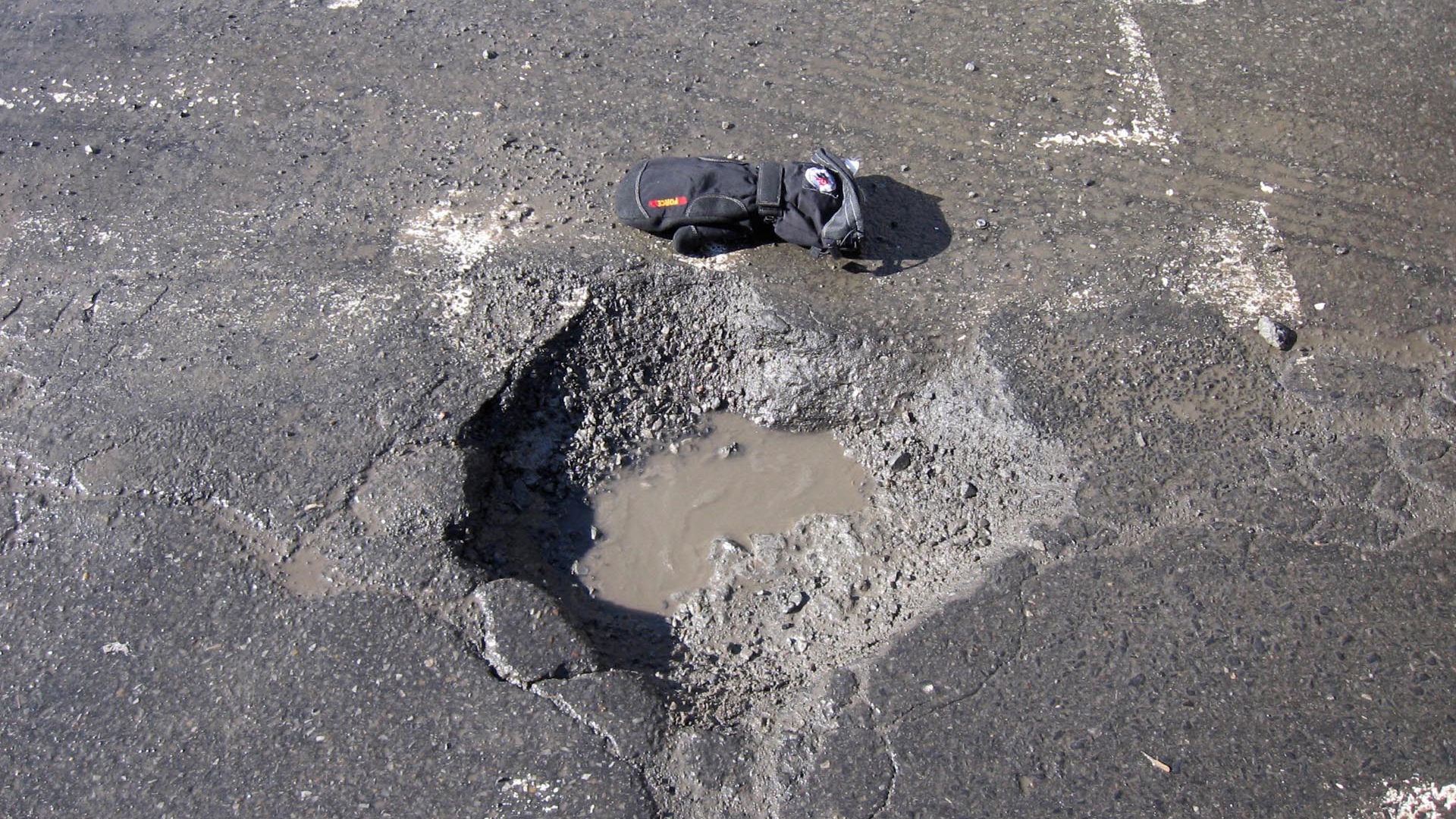Spring is in the air – carrying on its warm breezes the promise of new beginnings, blooming flowers, and hot summer days. Of course, it isn’t all leafy shrubs and fuzzy ducklings – especially if you nail a killer pothole with your car and blow its alignment to kingdom come.
Make no mistake: potholes aren’t just a springtime inconvenience, and though often downplayed by municipalities in terms of seriousness, the fact remains that striking one hard enough and at a high-enough velocity can instantly destroy your ride’s tire and wheel, causing a dramatic crash. Smaller potholes can chew up and knock around your vehicle’s wheels, tires and suspension – resulting in accelerated wear, damage, alignment issues, and hefty repair bills.
The motoring public shouldn’t simply accept potholes as a discomfort, or yearly rite of spring passage. They’re a serious risk to drivers everywhere.
Here are a few things to bear in mind as you travel pothole-riddled roads this spring.

Holding it Together
Remember: your vehicle’s front end is comprised of several complicated systems that work together. Steering and suspension, for instance, contain many parts that can wear out over time – potholes or not. Poorly maintained vehicles will likely suffer damage more severely when striking potholes. Occasional checks of these systems and components by a mechanic are vital to ensuring your vehicle handles and steers as intended.
What’s That Noise?
Hear that clunking or popping sound from your ride’s front end? It’s not normal, it won’t go away, and it’s your cue to get your family hauler into the shop, pronto. Healthy suspension systems don’t clunk, and unhealthy suspension systems could be an accident waiting to happen. Have you ever seen a car that’s suffered a ball-joint failure while driving? They’re usually on the side (we hope) of the highway with the front wheels facing away from one another, the suspension collapsed, and the nose on the ground. The spouse looks grumpy, the kids look hungry, and the driver looks embarrassed. Don’t be this guy. If your suspension sounds funny, get it looked at without delay.
Going Straight
Hitting a pothole can instantly throw your vehicle’s alignment out of whack – which causes extra wear on your tires, and increased rolling resistance, which wastes fuel. Proper alignment saves money by reducing tire wear, often drastically, and helps your ride go down the road using less fuel. Proper tire inflation, along with a proper alignment, are major steps towards improved fuel economy. Note that a vehicle with improper alignment can also suffer from reduced handling and grip, which is a safety issue. Signs of an alignment issue include a pull in the steering wheel, and uneven wear across the tire treads. If you suspect your alignment might be out of whack, ask your favourite mechanic to take a look.

Check Your Tires
Inspect your tire sidewalls often, and especially after you hit a gaping pothole. Check both the inner and outward-facing surfaces. Larger potholes can cause cracks in the sidewalls, both inside and out, which are a serious safety issue. A cracked sidewall may not result in an air leak, but could cause an instant blowout on a subsequent pothole strike. Bulges or bubbles in the tire’s sidewall may indicate pothole-related tire damage, too. In any case, you’ll need to replace tires, or risk the consequences. With older, worn tires in the mix, the risks increase dramatically.

Brake! But then Stop Braking
If you can’t avoid hitting a monster road crater, do as much slowing down as possible before hitting the pothole, and release the brakes at the last possible moment. Hitting a pothole with the brakes applied will worsen the impact and cause more damage, as braking shifts weight ahead, and effectively makes your ride heavier in the front end. If you see an inevitable pothole strike in your immediate future, brake as hard as possible before and release as you are about to hit the pothole.
Easy Does It
If you suffer a blowout of a front tire, resist the temptation to apply hard braking, which will put more weight and strain on to your ride’s damaged wheel and tire. Use only light braking where appropriate, and look for a safe path to the side of the road. Lock onto that path with your eyes and steering, adjusting as needed to compensate for the loss of control. Avoid looking at obstacles like cars and trees you don’t want to hit, and stay focused on your escape path from the roadway.







